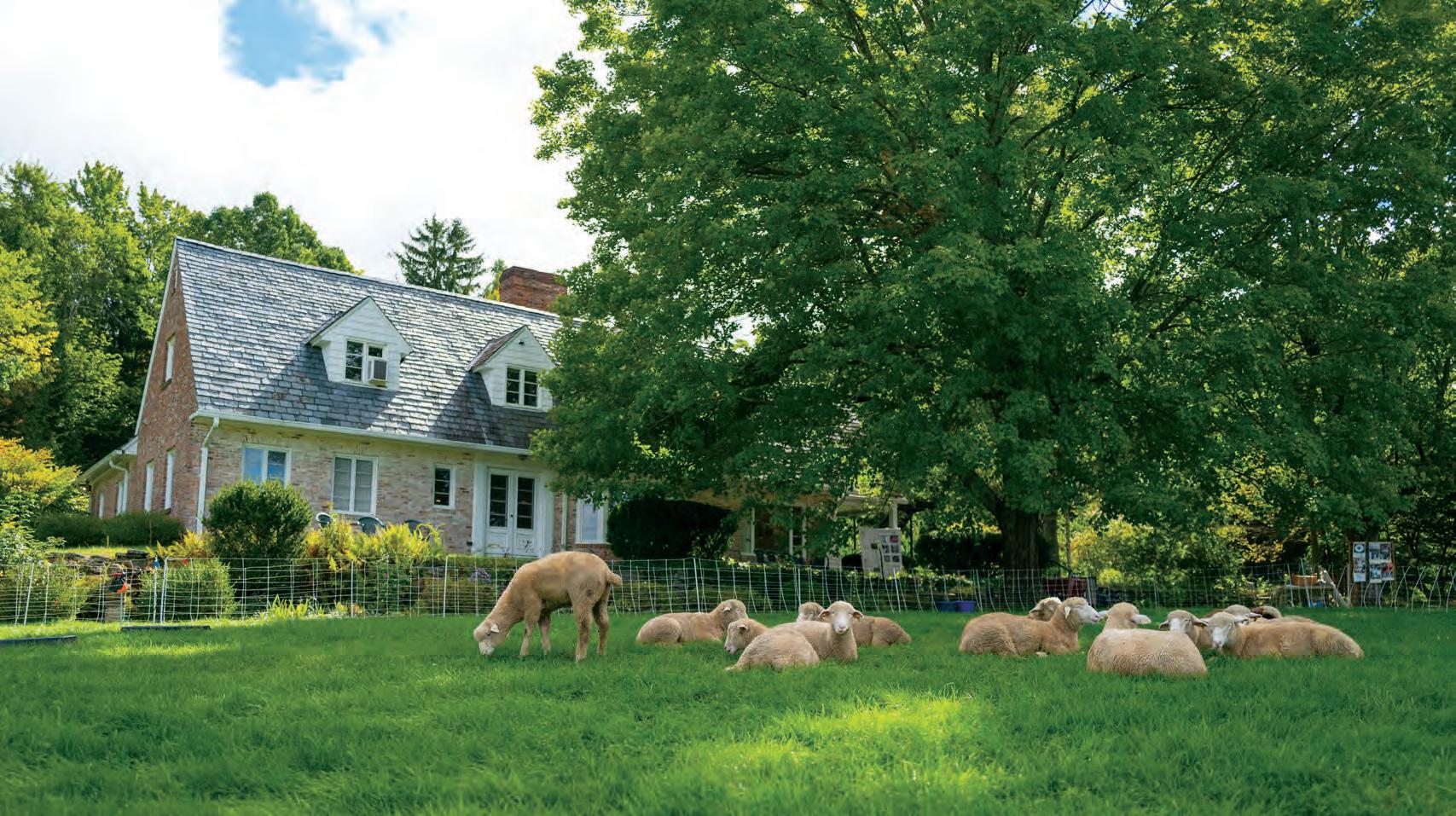
2 minute read
Kinney Center for Interdisciplinary Renaissance Studies
Inspired by the desire to generate new perspectives on the relationship between the early modern world and our own, the Renaissance Center’s Artist in Residence program invites regional artists and makers to find inspiration in our collection of over 1,000 rare books and manuscripts as well as our gardens and meadow.
The Renaissance of the Earth research initiative is well under way at the center, leading to collaborations with a range of departments across campus.
Advertisement
This past year, we hosted two local printmakers. The first, Andrea Caluori, approached the rare book collection from her experiences as a farmer and expertise as a printmaker, focusing on seventeenth-century animal husbandry and land management manuals. Her exhibit, Mapping Terroir: Memory & Myth, featured eight original linocut prints that illuminated how myth and historical memory shape relationships between humans, animals, and plants, thereby fostering ideas of earthly terroir, past and present. We also welcomed Madge Evers, who created a series of cyanotype and mushroom spore prints with materials gathered from the center’s garden and meadow in the exhibit Foraged: Kitchen Garden Herbaria Her work honors the wild life of mushrooms and highlights the interdependent relationships across species that were of interest to early seventeenth-century earth science writers and horticulturalists alike.
The Renaissance of the Earth research initiative is well under way at the center, leading to collaborations with a range of departments across campus. Teams of students from natural resources conservation courses asked “what’s growing here?” and conducted a “BioBlitz” of the center’s landscape to identify as many species of plants as possible. Faculty and student researchers from the Department of Environmental Conservation installed a series of camera traps to learn about animal habitats and migration patterns across our varied landscapes.We also partnered with a team of campus-wide interdisciplinary researchers to host a small flock of sheep from the Hadley Farm in our meadow. This graze project was part of the Sustainable EweMass initiative, a student-led, participatory reimagining of our campus land and how it’s used and valued. As sheep grazed, student researchers explored the past, present, and possible futures of grazing as a sustainable tool for land management.

Students from UMass’ beekeeping club expanded what we mean by an archive for Renaissance of the Earth by building a beehive in our meadow. For this project, students explored William Lawson’s A New Orchard and Garden (1648) to better understand the historical context of imagined and practical relationships between human and bee. We welcomed undergraduate students Melanie Morgan and Hannah Gould as our new Renaissance of the Earth Fellows. Melanie is studying Horticulture and is interested in conservation practices in Indigenous cultures. Hannah is earning a degree in Sustainable Food and Farming with an English specialization in The Study and Practice of Writing. Please reach out if you are interested in joining our network of students, alumni, and researchers exploring the Renaissance of the Earth.
For further information, visit umass.edu/ renaissance and renaissanceoftheearth.com

—Marjorie Rubright, Director, Kinney Center for Interdisciplinary Renaissance Studies
Affiliated Programs







